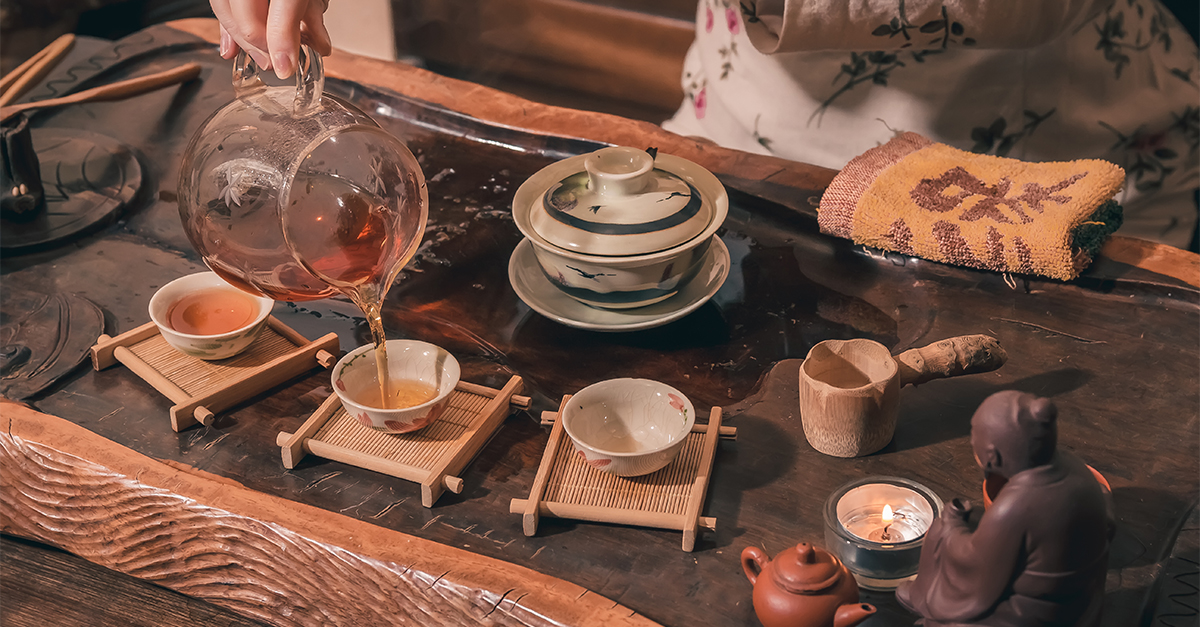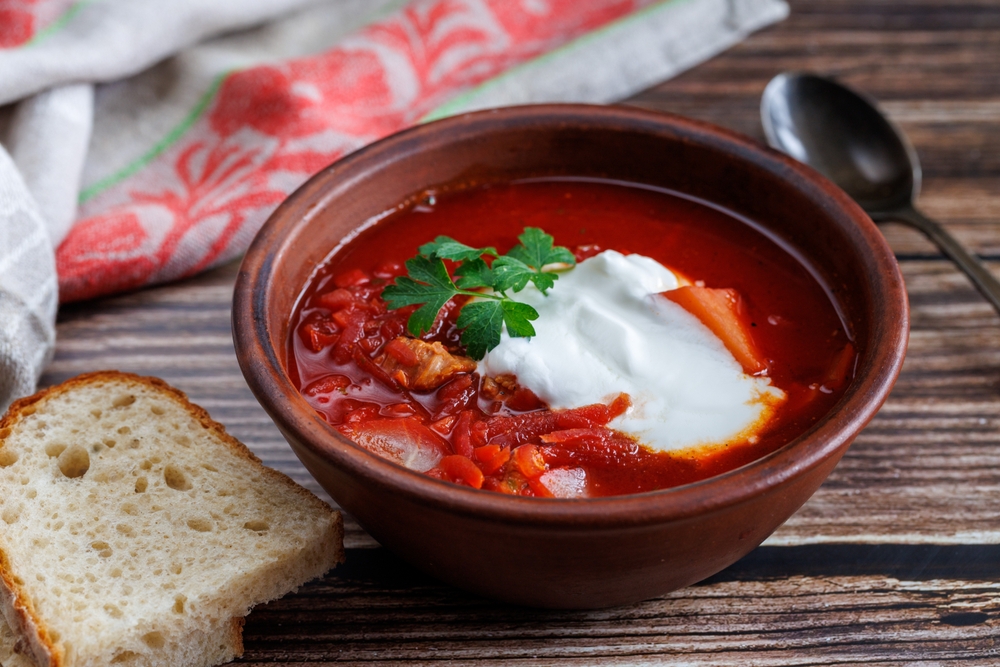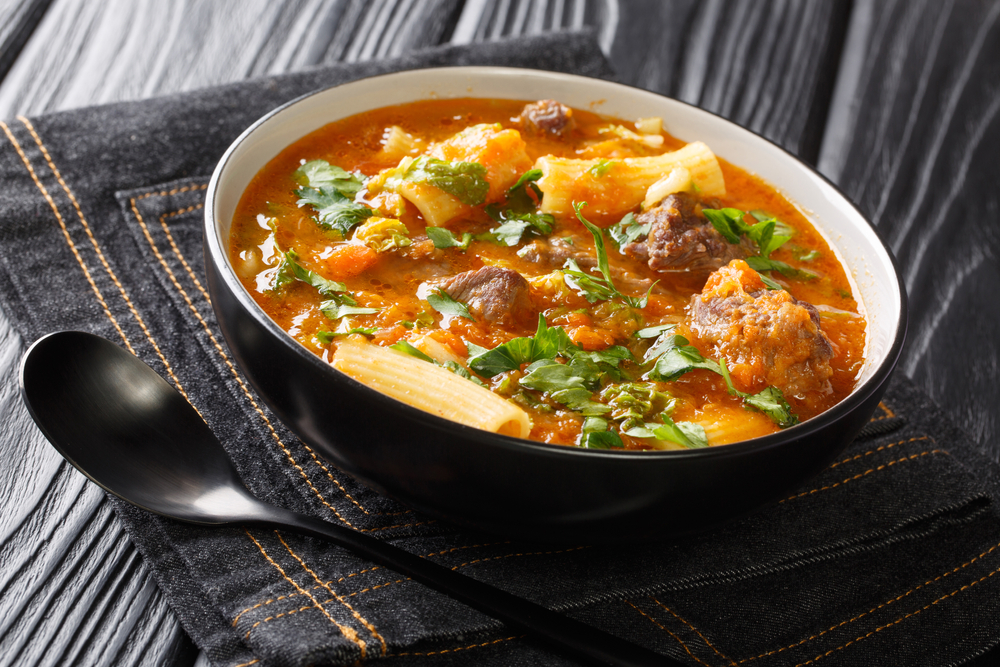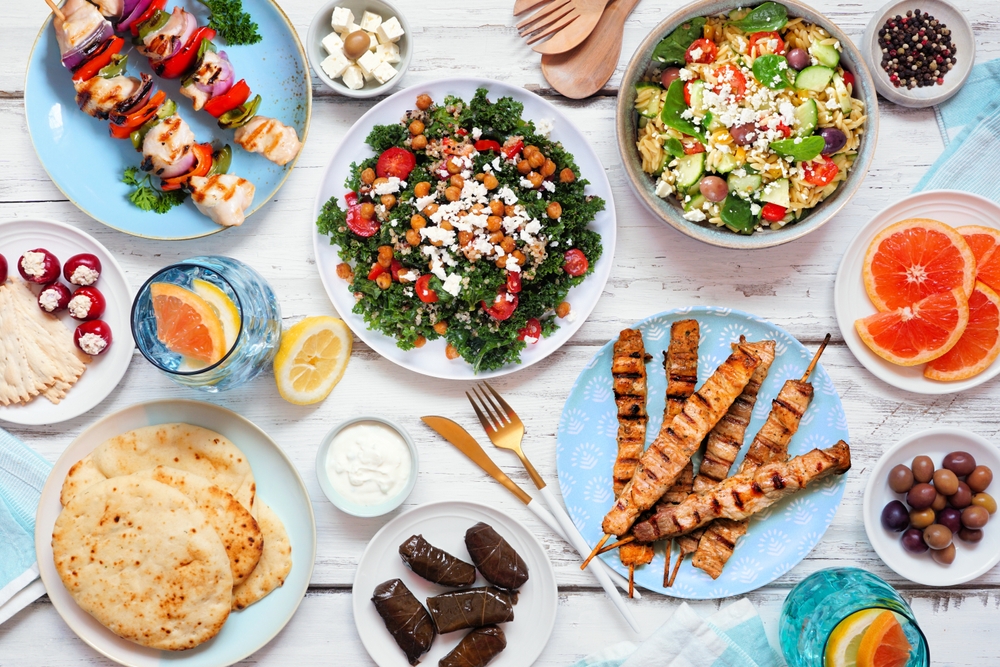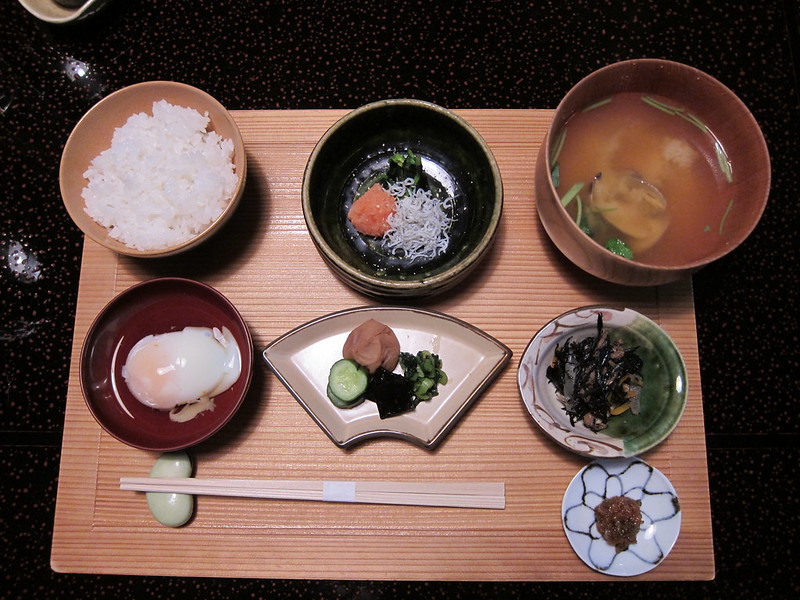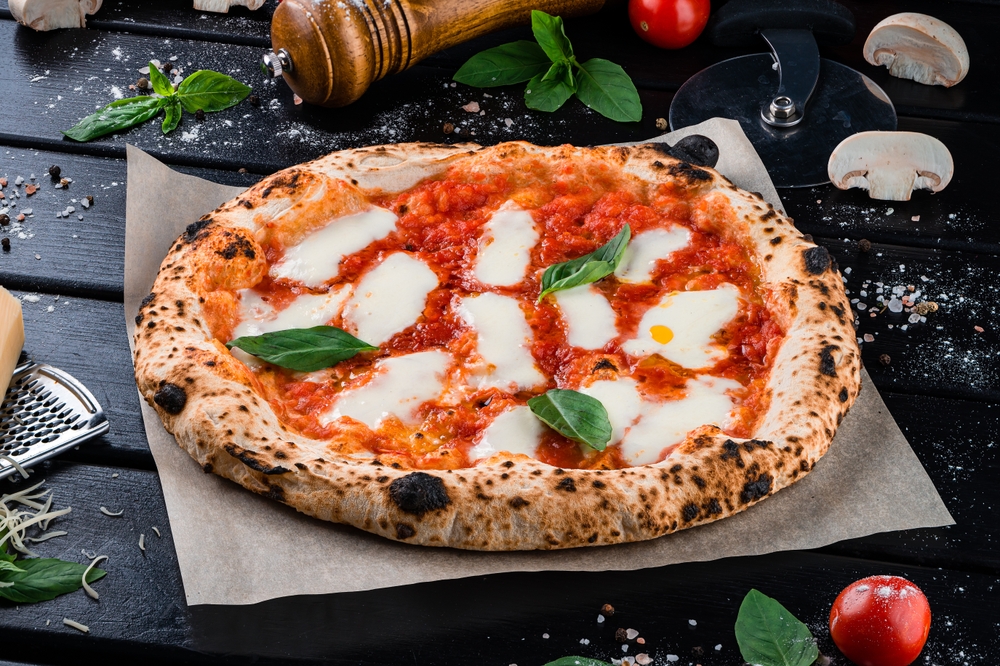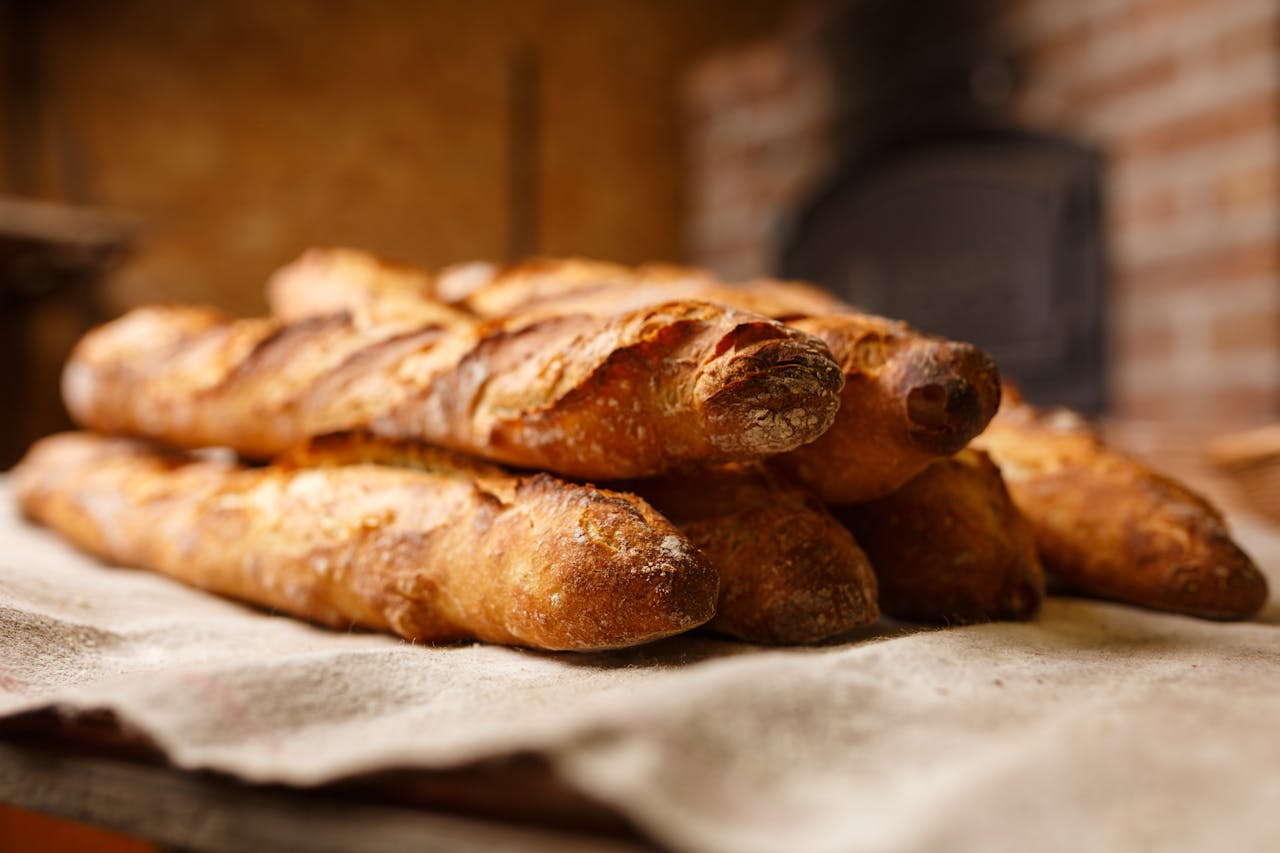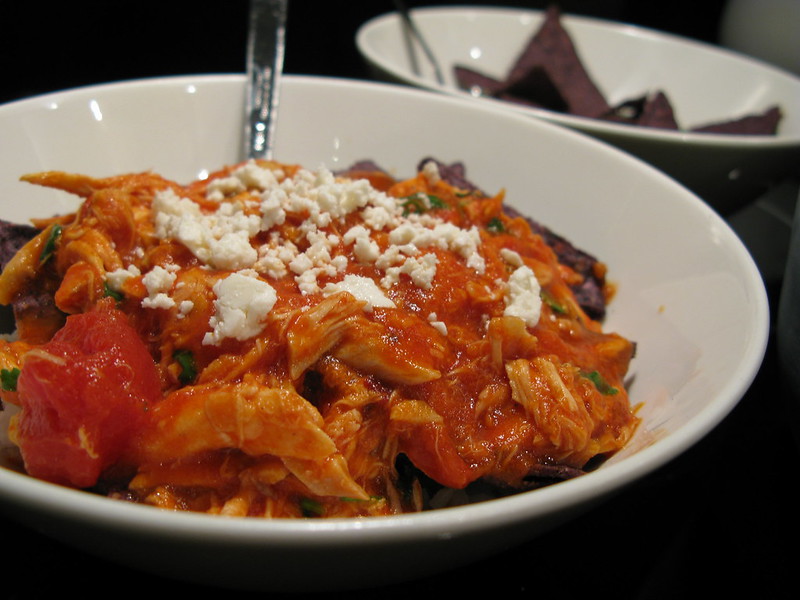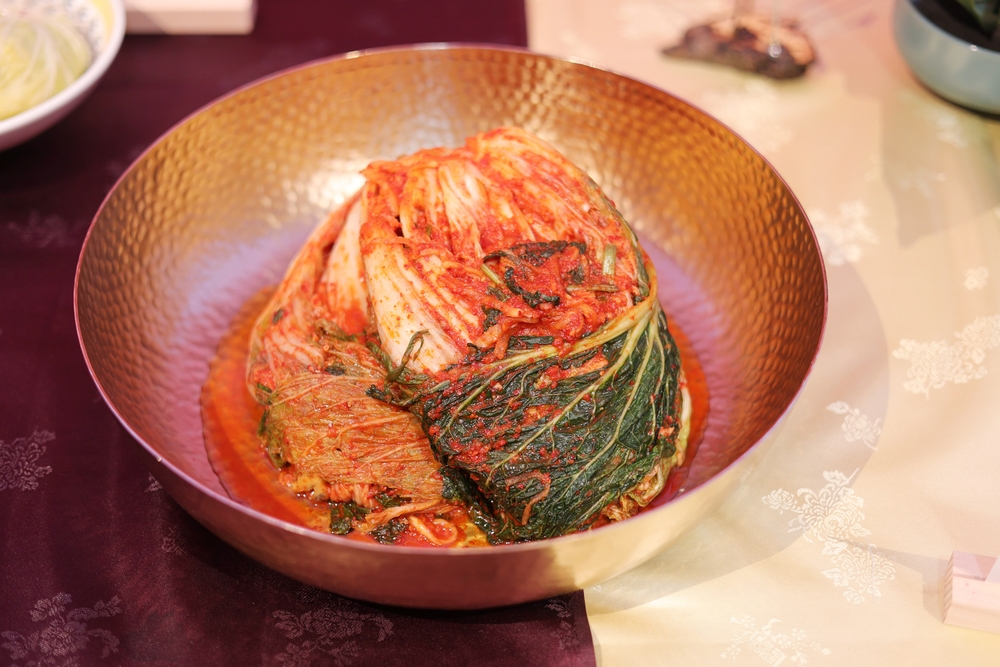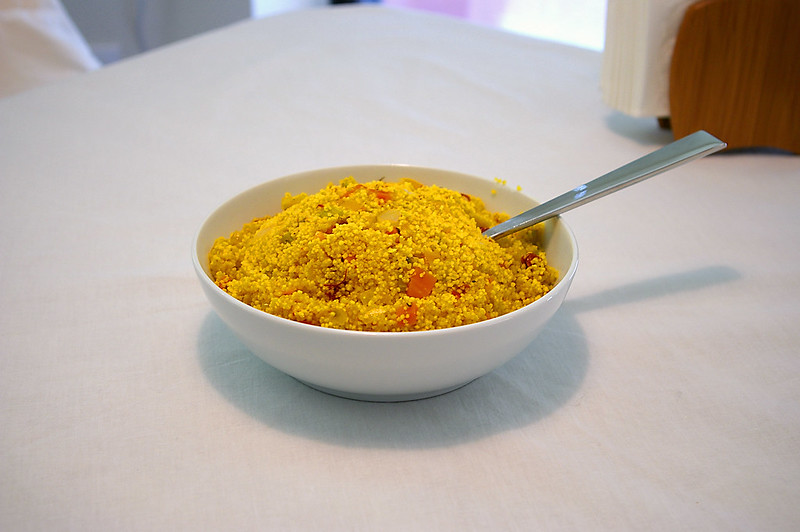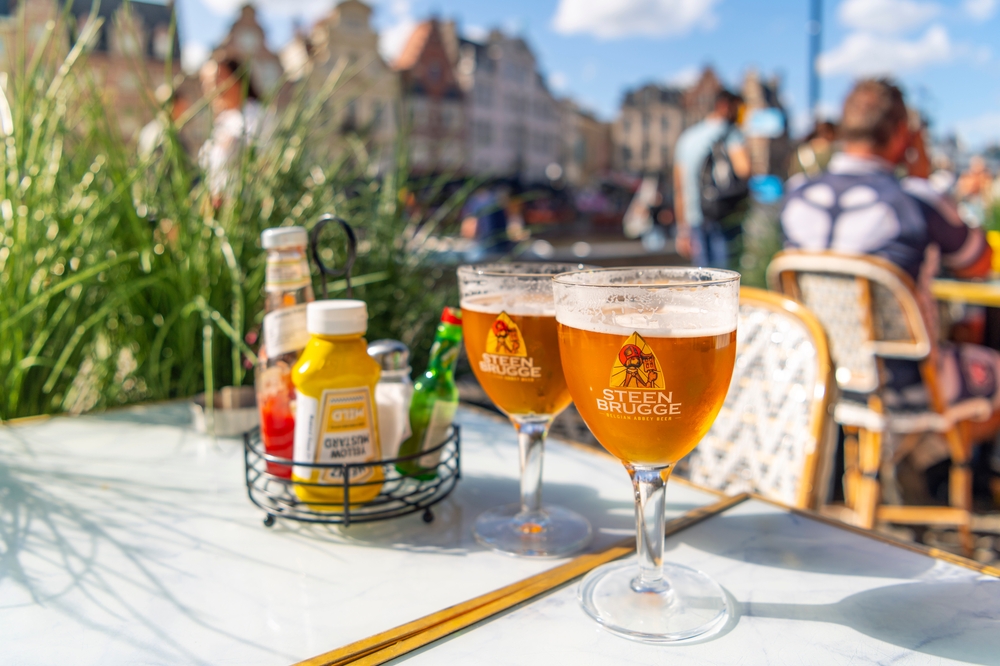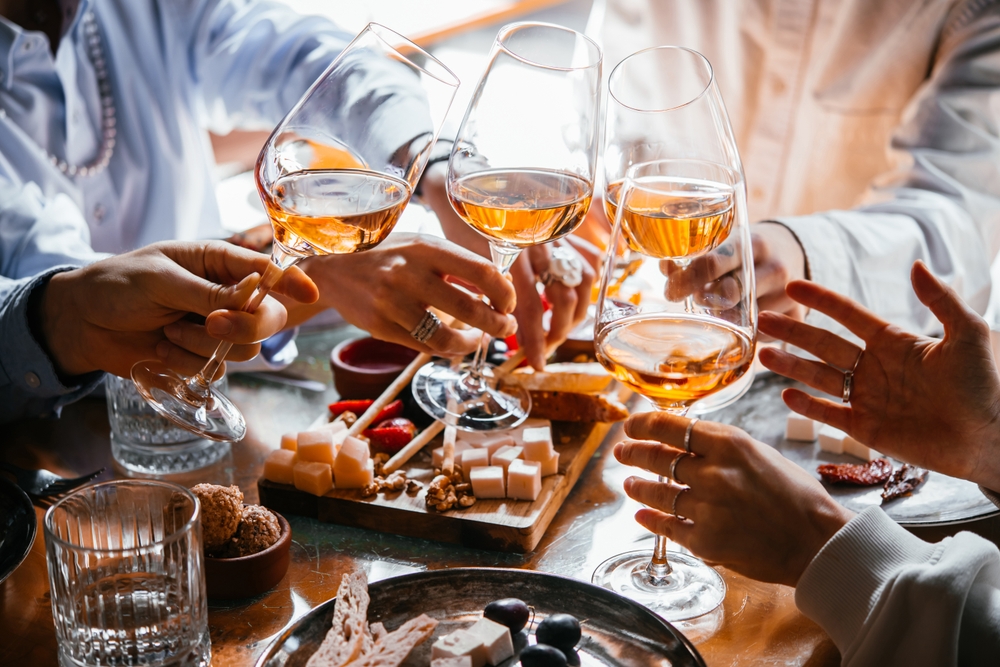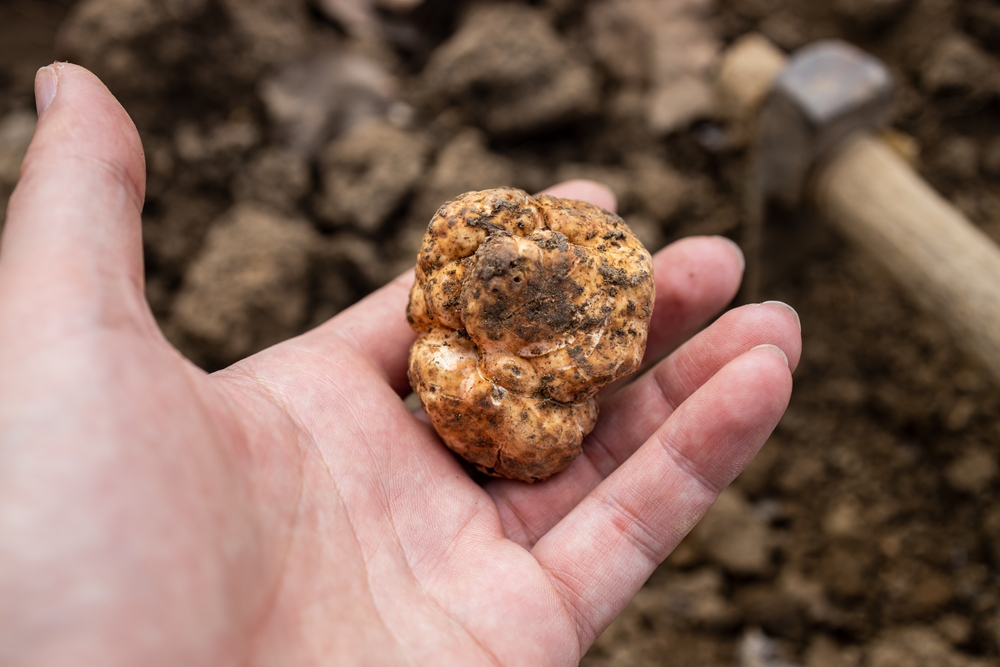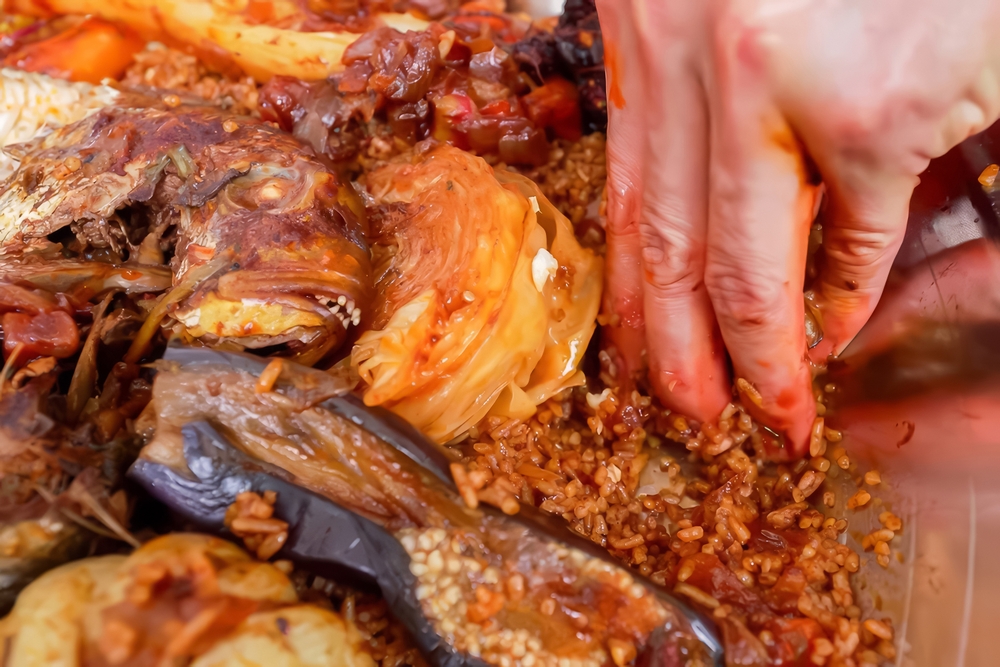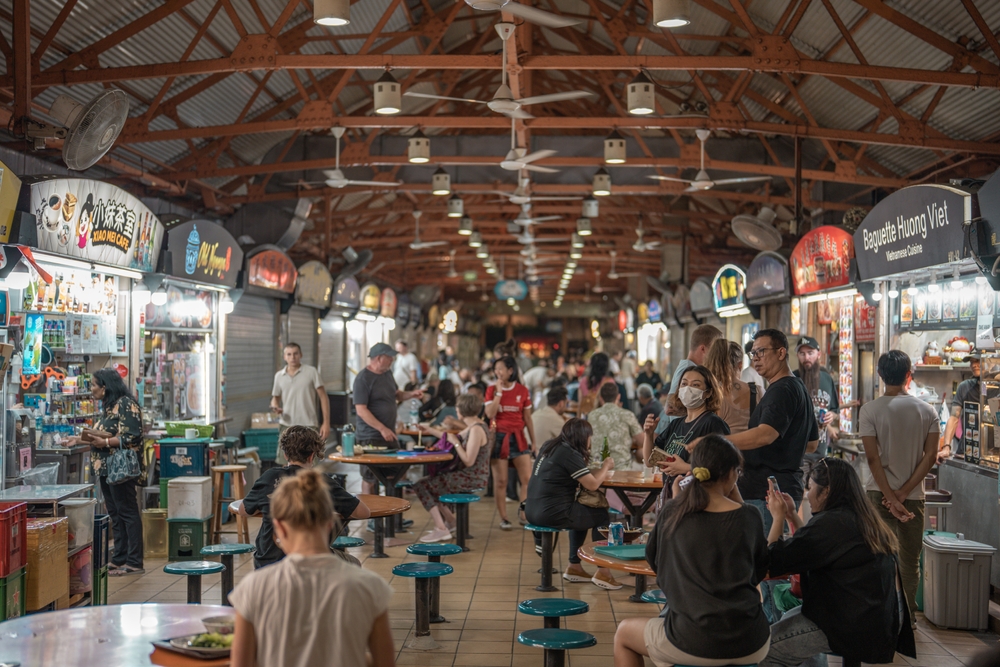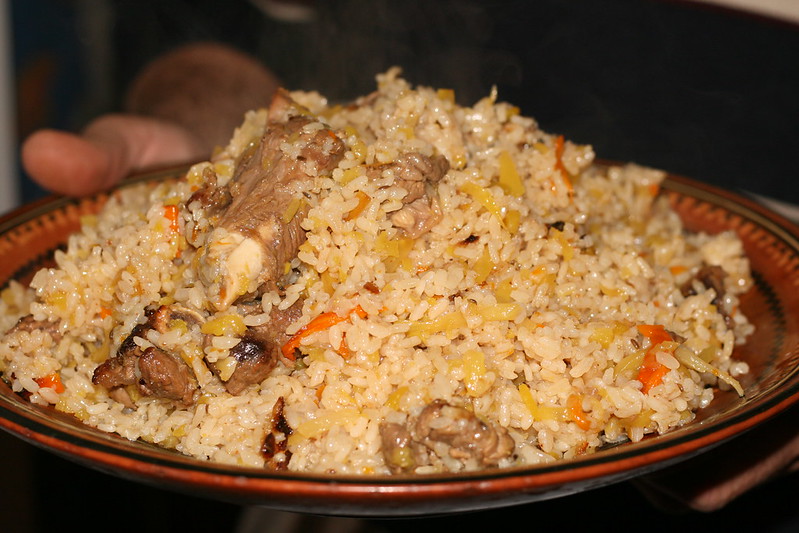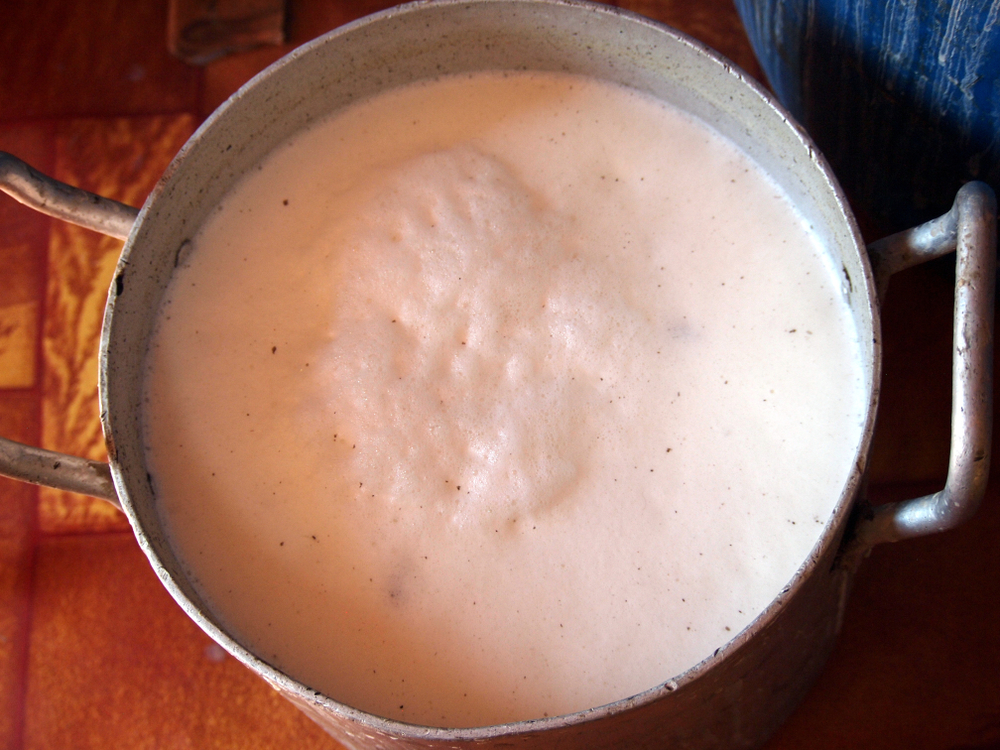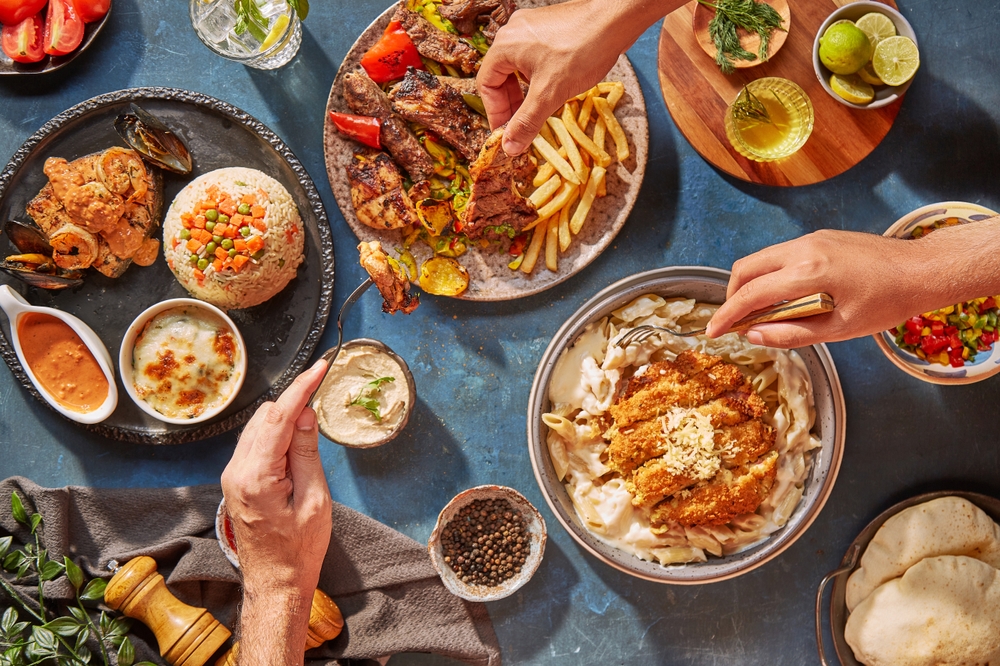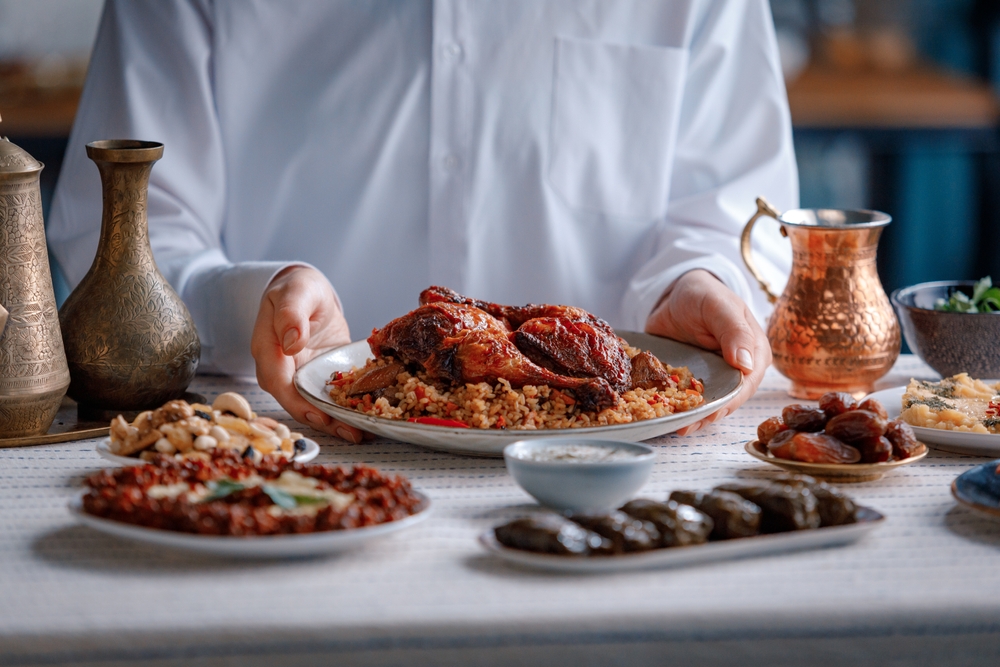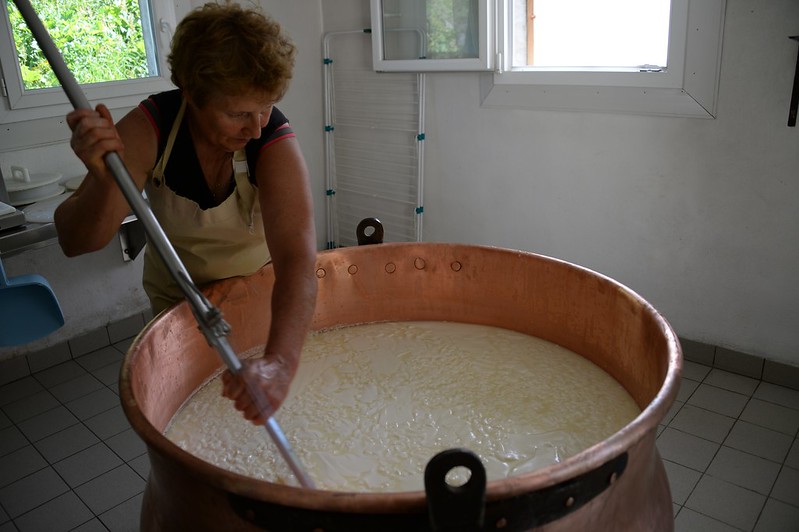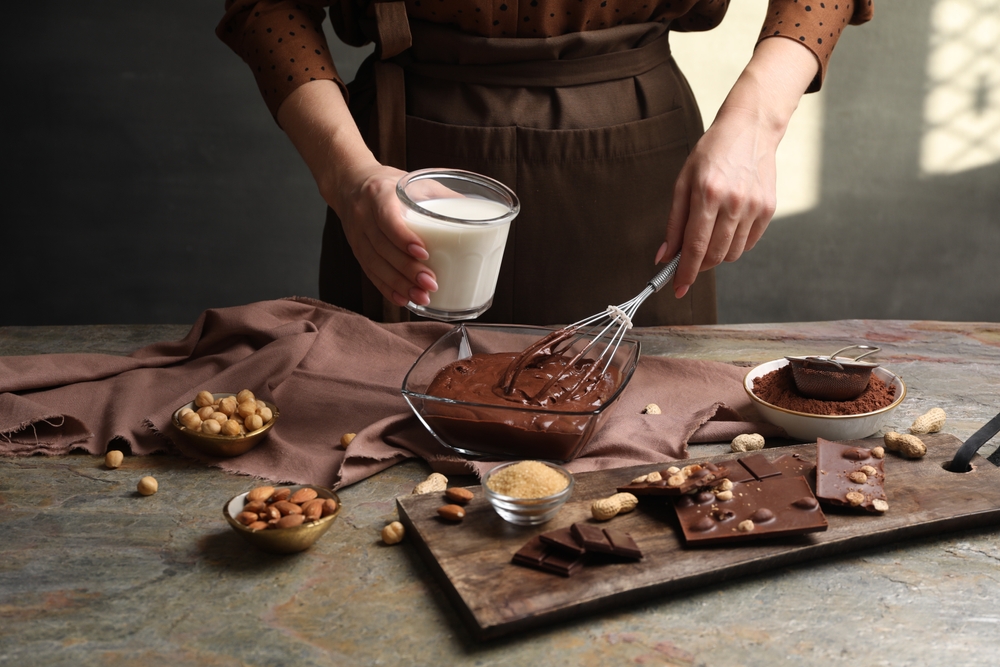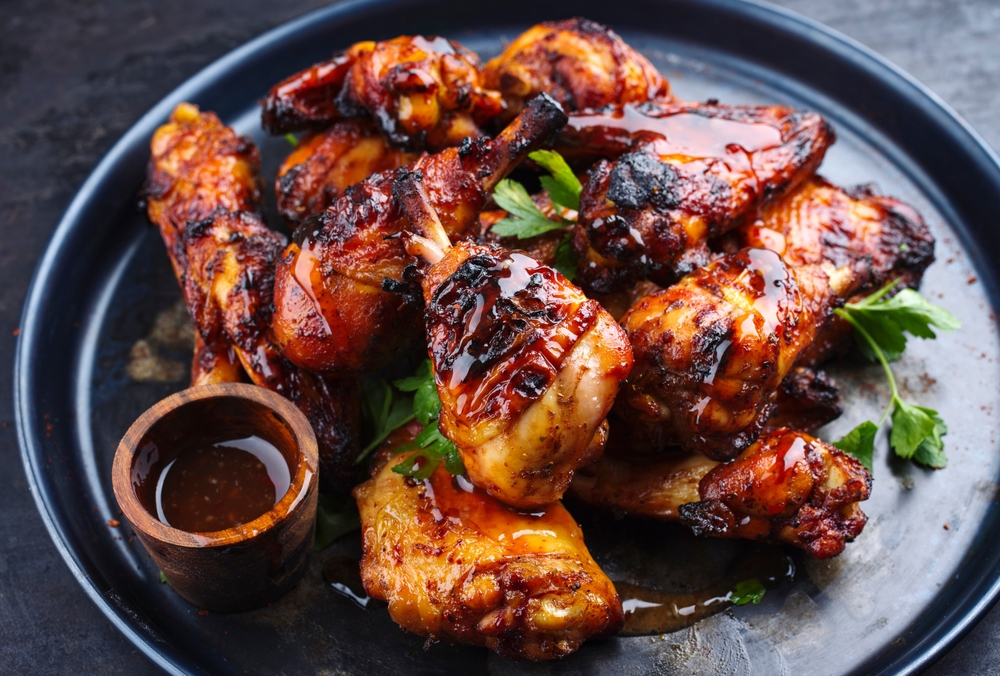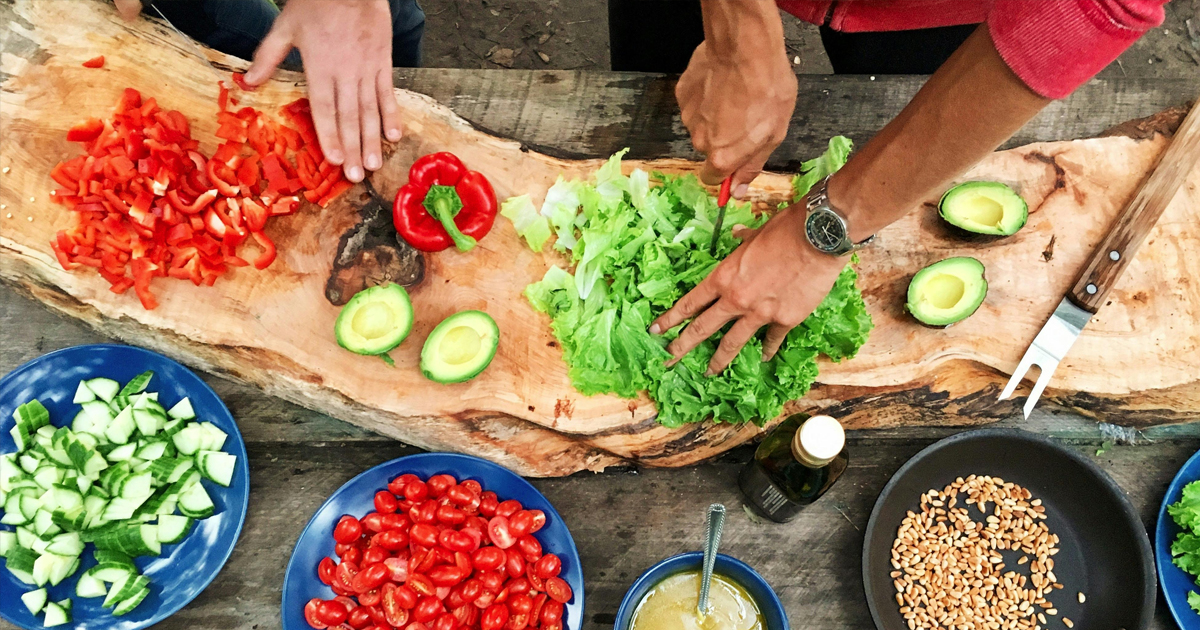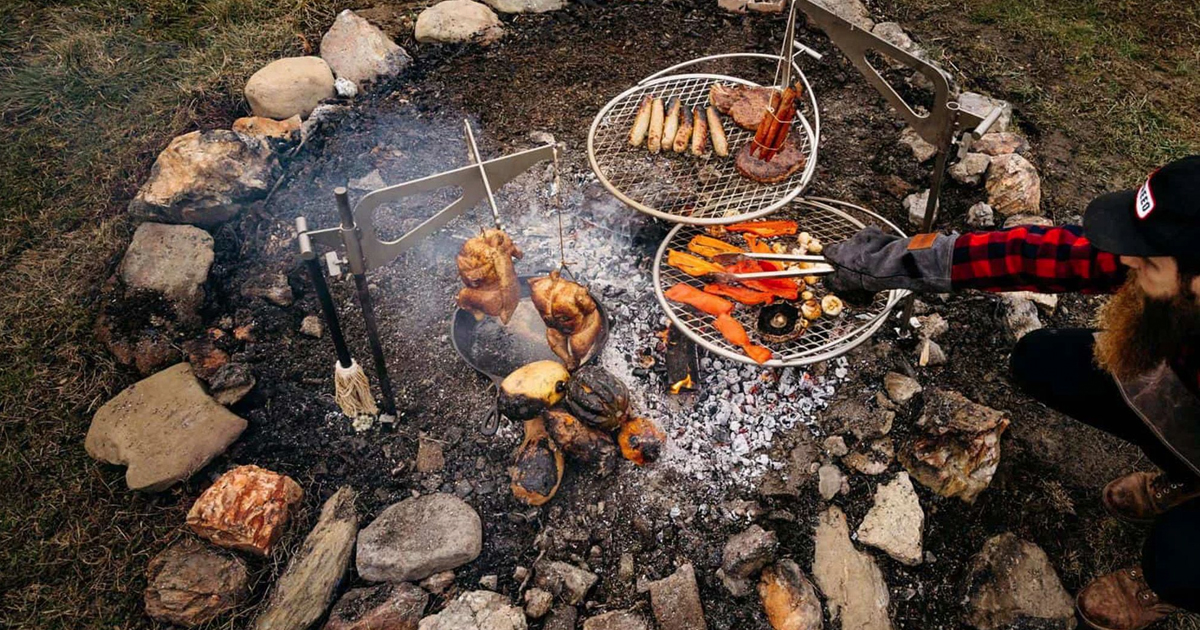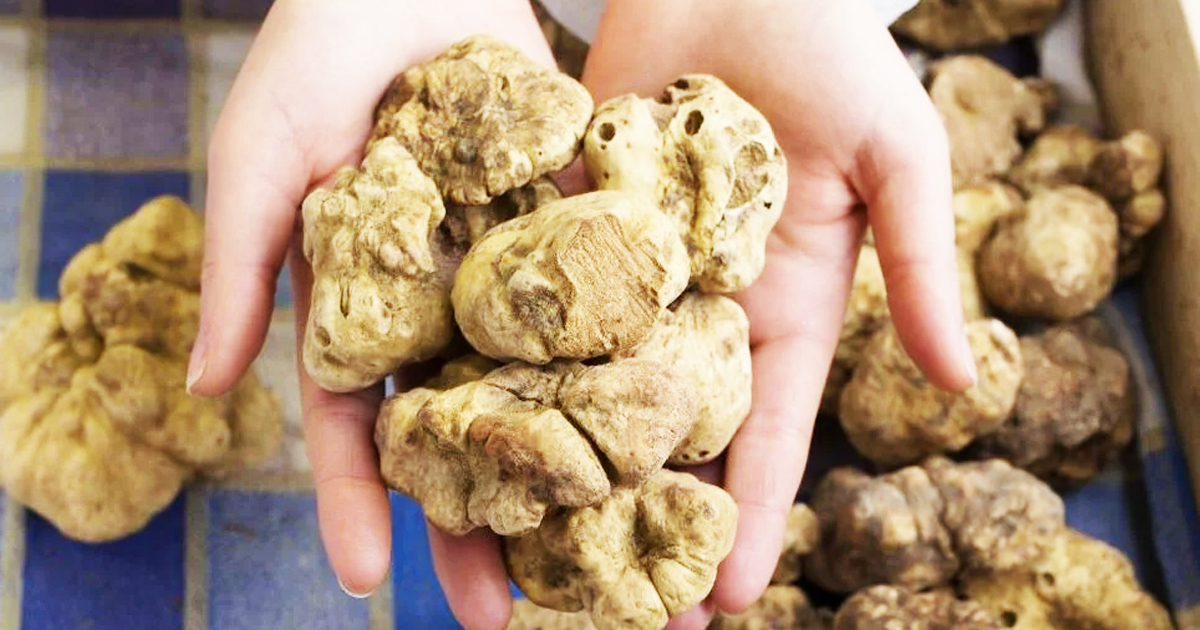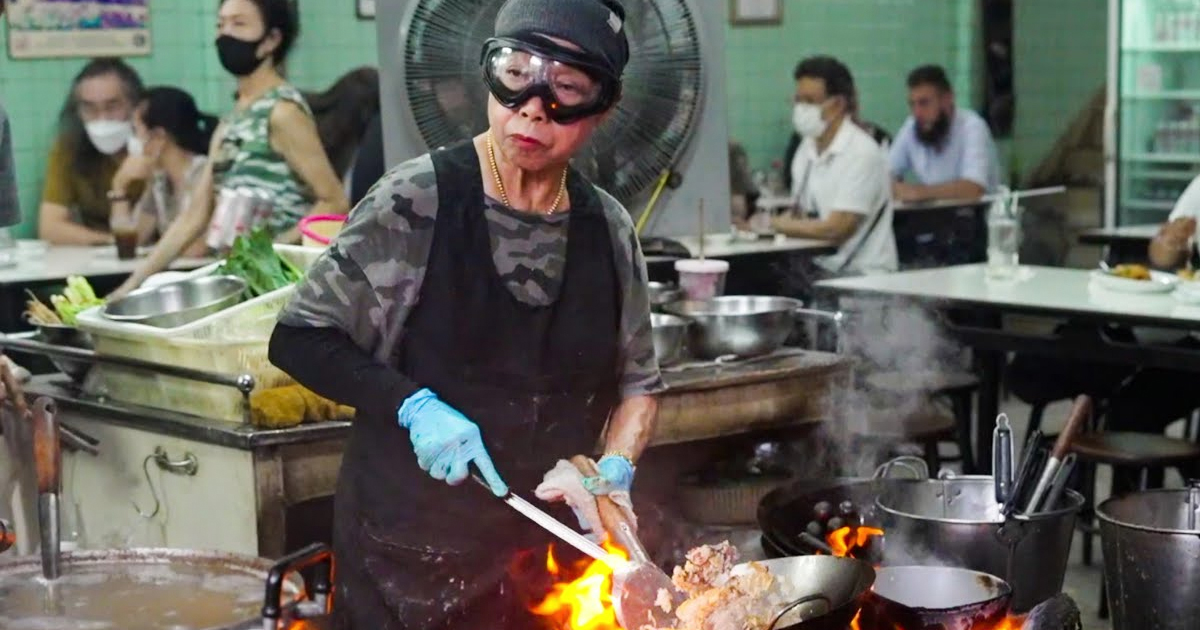The Importance Of Food Culture
Most of us know that UNESCO designates heritage sites—but did you know that they also keep a list of important culinary traditions too? It’s actually part of a larger list of “Intangible Cultural Heritage of Humanity”. These gastronomic traditions were so unique and such an important part of the cultures that they came from that UNESCO included them in hopes of both celebrating and safeguarding them—and for good reason.
Read on to find which traditions and dishes made the cut!
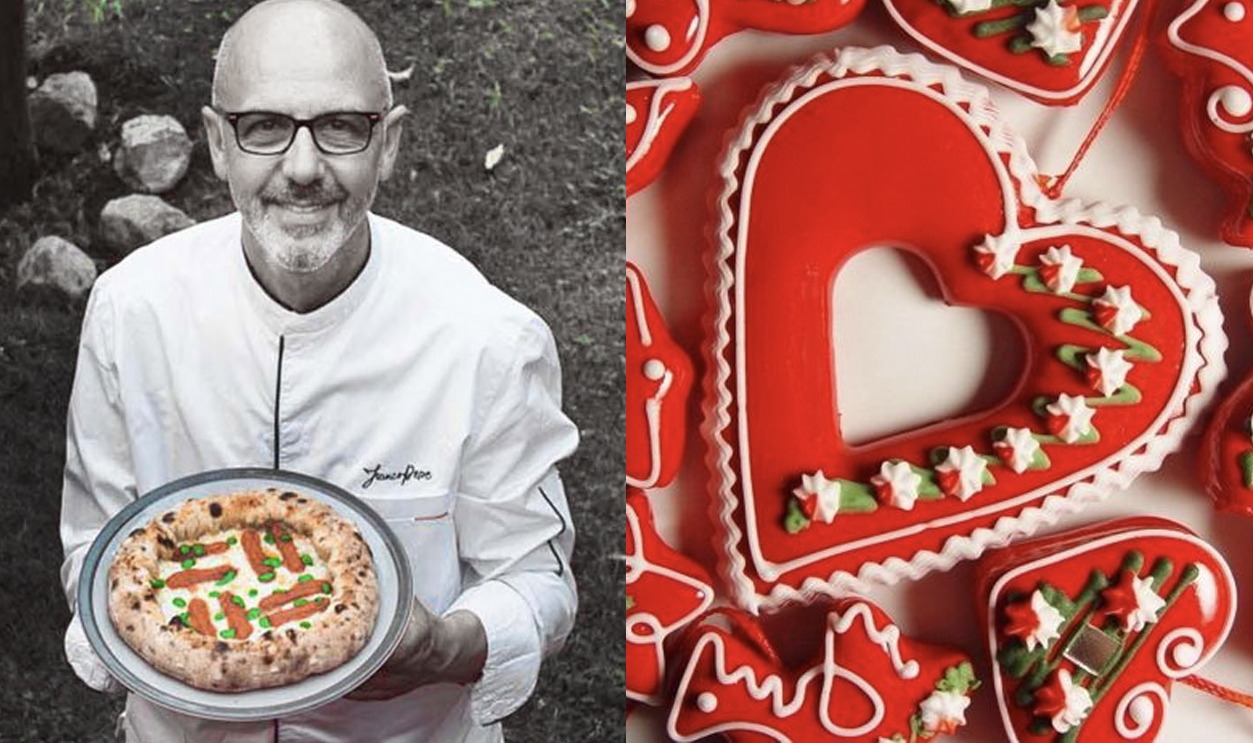
Borscht, Ukraine
There are as many versions of borscht, a traditional beet soup, as there are Eastern-European countries—and honestly, all of them are pretty good. UNESCO chose to recognize Ukrainian borscht as part of their list, as it’s a staple for Ukrainians at home and all over the world, as so many have fled conflict over the decades. In 2022, UNESCO added it to the list in light of the fact that the preparation of traditional Ukrainian borscht was under threat from Russia.
Ukrainian borscht is thick and hearty, usually using a meat stock, plenty of beets, with vegetables like cabbage, potatoes, and tomatoes, and often served with a dollop of sour cream on top. Fun fact: Though some borscht in Poland is touted as Ukrainian borscht, the thin, clear beet broth is actually specific to Poland.
Soupe Joumou, Haiti
Soupe joumou is one of the entries on the list with the most interesting histories. The squash-based soup originated at a time when the country was colonized by France, and French plantation owners would eat this soup while starving their Haitian slaves. When they rose up against slavery and gained their independence, Haitians started making this soup themselves, and it became a symbol of their freedom.
It’s most frequently eaten on January 1, Haitian Independence Day, and is made with squash, beef, vegetables, and spices.
Mediterranean Diet, The Mediterranean Region
While some might think of the Mediterranean diet as just a weight loss fad, it’s actually so much more than that—and it’s such an important part of the shared culture of the region that UNESCO added it to its list in 2013. Though they concentrated on the way that the diet takes form in Spain, it’s also an important part of culture in Croatia, Cyprus, Greece, Italy, Morocco, and Portugal.
The parts of the diet that UNESCO wanted to recognize include the use of fresh, local ingredients, small plates that are shared like those in the tapas culture of Spain, the relationship between food and social connection, and the large markets that sell local specialties and fresh produce, fish, and meat.
Washoku, Japan
Who doesn’t love Japanese food? Even if you don’t like sushi, there’s miso soup, tempura, soba and udon noodles, and sukiyaki, to name a few dishes. That’s why, when selecting a dish from Japan that represents the country’s intangible cultural heritage, UNESCO chose Japanese traditional cuisine as a whole—AKA washoku. It was added in 2013 amid concerns that the traditional dietary habits and dishes of Japan were dying out.
The traditional Washoku usually consists of four elements: rice, soups, sides that flavor the rice, and tsukemono, Japanese pickled vegetables. All of these dishes are served on separate plates, or on a plate divided with leaves, so that they don’t touch.
Neapolitan Pizza-Making, Italy
Of all the different types of pizza in Italian cuisine, the kind the world is most familiar with is the traditional Neapolitan pizza, involving a crust made of water, flour, salt, and yeast, topped with fresh, local ingredients. Surely, UNESCO had a hard time determining which pizza-making tradition they’d include on the list, but ultimately, they settled on the hardworking pizzaioli of the city of Naples.
Mansaf/Al-Mansaf, Jordan
Mansaf or Al-Mansaf is a traditional dish often served on holidays and other special occasions. The name essentially means “large tray,” which is what the sharing dish of roast lamb or chicken in a fermented yogurt sauce with rice or bulgur is served on. It’s a remnant of Bedouin culture in the Middle East and was added to the list in 2022.
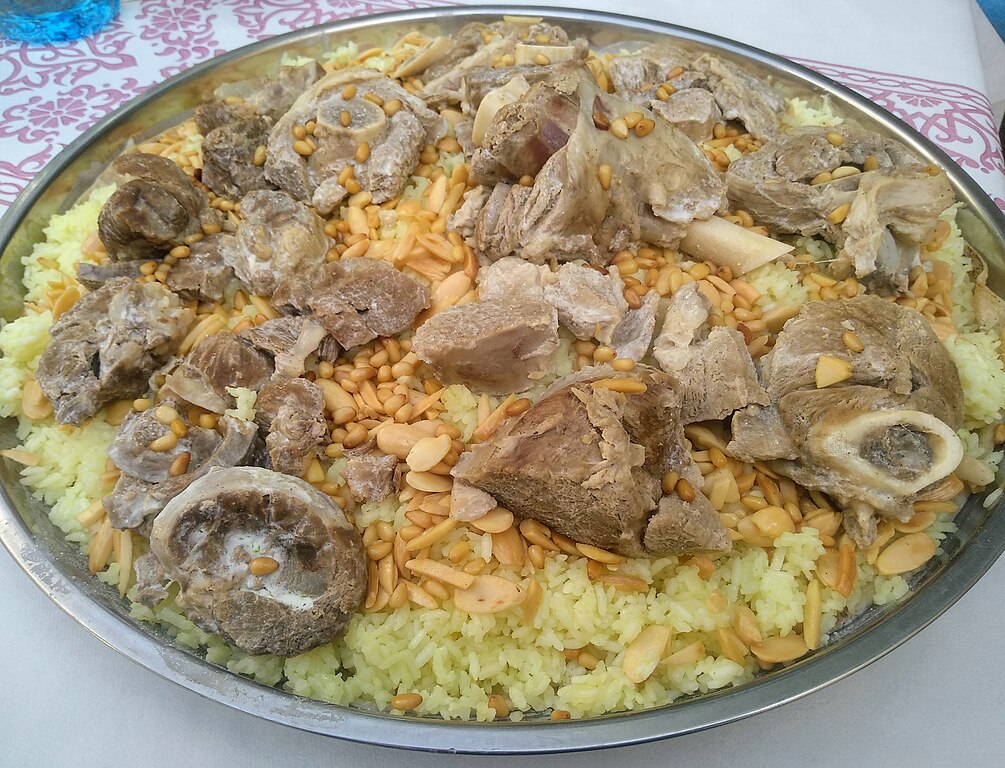 Fjmustak, CC BY-SA 4.0, Wikimedia Commons
Fjmustak, CC BY-SA 4.0, Wikimedia Commons
Baguette, France
What’s there to say about the baguette that hasn’t been said before? It’s the quintessential food of France, beyond French onion soup, croque-monsieur, pot au feu, or any other dish. The simple yet satisfying bread is consumed with nearly every meal in France, often bought fresh from one of so many quality boulangeries—and if you want to pass as a local, be sure to rip off a chunk instead of slicing it into rounds.
Traditional Mexican Food, Mexico
In Mexico, food is an integral part of any social gathering—and many of the culinary traditions of the country go back to the time of Spanish conquest, when Spanish culinary practices blended with older Mayan and Aztec food traditions. The love of Mexican food has spread exponentially in the last few decades, and many dishes can be recreated at home, but truly nothing beats eating a traditional Mexican dish at the source—be it mole, chilaquiles, or even chapulines (crickets).
Kimjang, South Korea
Few dishes bring together an entire community the way that the preparation of kimchi, AKA kimjang, does every November. That month was the traditional time when families would assemble to prepare the kimchi, using products from the harvest like Napa cabbage. To make kimchi, the cabbage—or other vegetable—is chopped, tossed with a thick red paste made from chilis, salt, and other seasonings, and then packed into clay jars that are buried underground to maintain temperature.
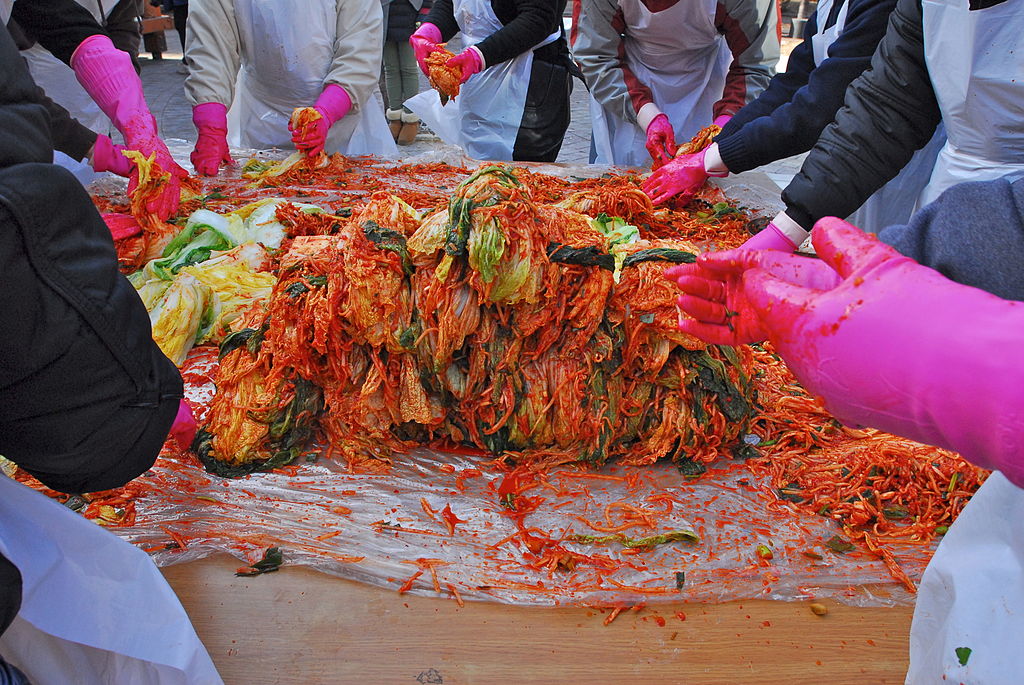 USAG-Humphreys, CC BY 2.0, Wikimedia Commons
USAG-Humphreys, CC BY 2.0, Wikimedia Commons
Kimchi, North Korea
Along with the South Korean tradition of kimjang, UNESCO also included kimchi in North Korea as an intangible cultural heritage—but we’ll have to take their word for it, since no one can really visit to observe or enjoy the dish there.
Lavash, Armenia
What baguette is to the French, lavash is to Armenians. The preparation of the bread, often done by groups of women who work hard to knead the dough and then slap it onto the side of a clay oven, is as much a part of the tradition as the consumption of the lavash itself. It’s prepared from wheat flour and water, and is used during Armenian weddings, where it’s draped over the couple’s shoulders as a symbol of prosperity.
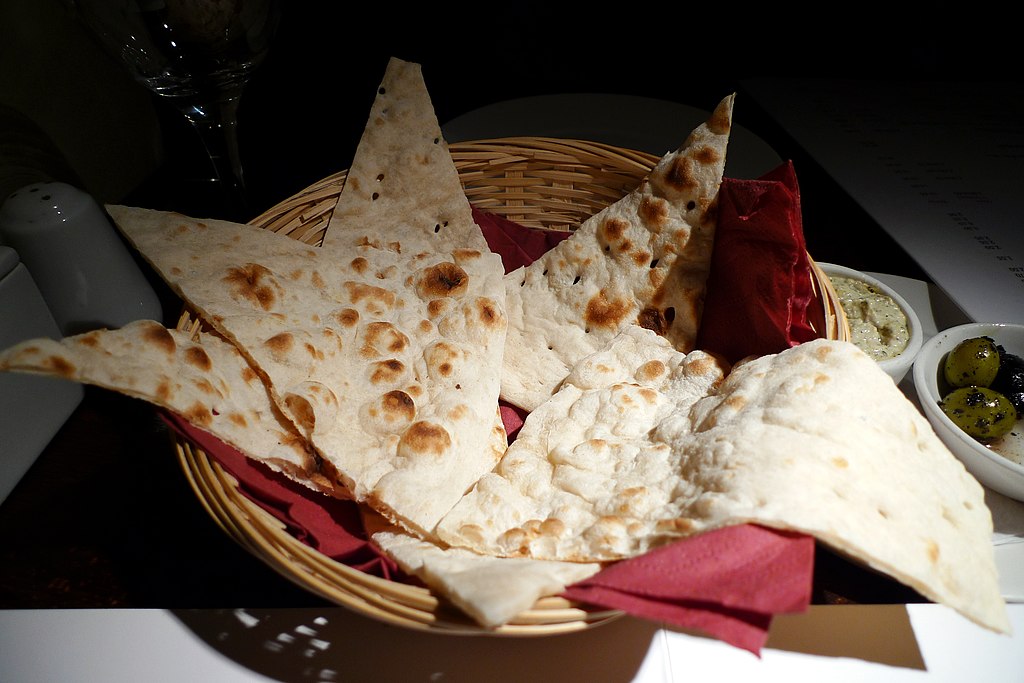 Ewan Munro, UK, CC BY-SA 2.0, Wikimedia Commons
Ewan Munro, UK, CC BY-SA 2.0, Wikimedia Commons
Tea Culture, China
Tea and the very many traditions and rituals around it are an integral part of many cultures across the world, and China is one of the oldest tea-drinking nations out there. In recognizing tea in China, UNESCO included not just the activity of drinking tea, but the processing of tea leaves and the culture around Chinese tea houses. More than 2,000 types of tea come from China, and it’s the country’s only entry on the list.
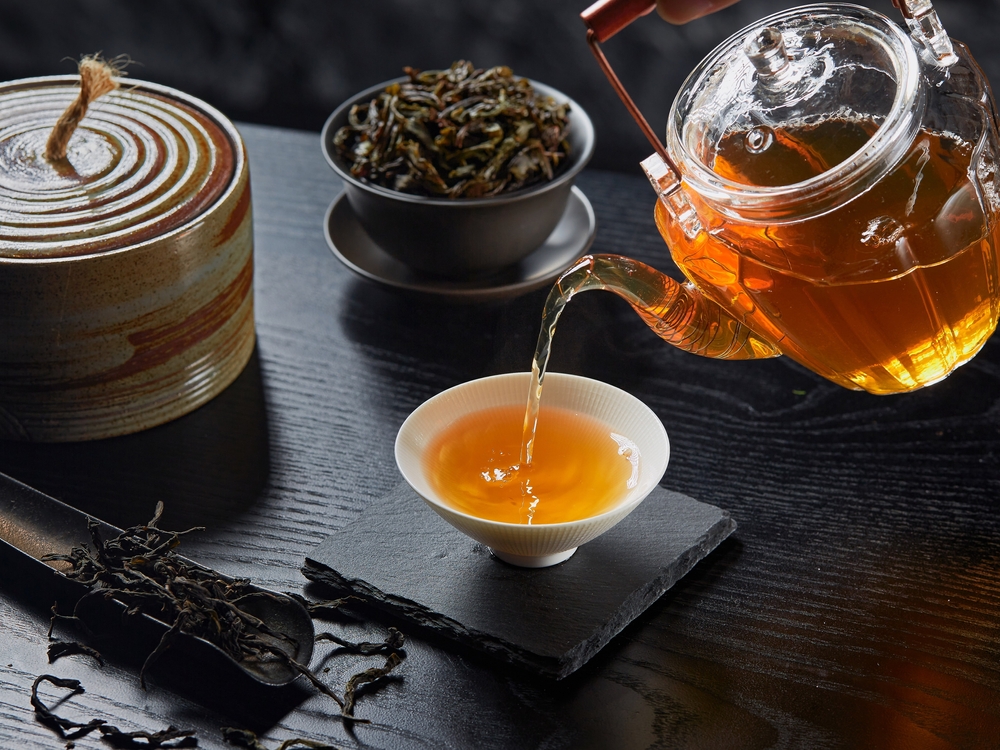 CatherineScarlett, Shutterstock
CatherineScarlett, Shutterstock
Couscous, North Africa
The preparation of couscous—and we don’t just mean the cooking—is an integral part of culture in Algeria, Mauritania, Morocco, and Tunisia. It’s an intense, laborious process, and its methods are passed down from mother to child in North African families. For example, after semolina is harvested, it has to be rolled by hand!
The way the couscous is then prepared, cooked in a tagine, and shared between friends or family is also an important part of the whole experience, which UNESCO added to their list in 2020.
Beer Culture, Belgium
What wine is to France, beer is to Belgium. The country has a brewing tradition that goes back centuries and is home to some of the most celebrated and beloved breweries in the world. What began as a way for monks and nuns to produce an alternative to unclean drinking water in the Middle Ages became an important part of Belgian tradition. Belgium is home to over 1,500 kinds of beer and it’s an integral part of day to day life in the country, which is why its culture was added to the UNESCO list in 2016.
Il-Ftira, Malta
Il-ftira in Malta is unlike almost anything else on this list. It’s a flattened sourdough bread—but not flatbread, let’s get that straight—that is specific to the island of Malta, and is handmade. In fact, if you want to become a ftira baker, you actually have to go through an apprenticeship program. Its unique preparation and the way that it’s taken so seriously in Malta are just a few of the reasons that il-ftira was included on the UNESCO list.
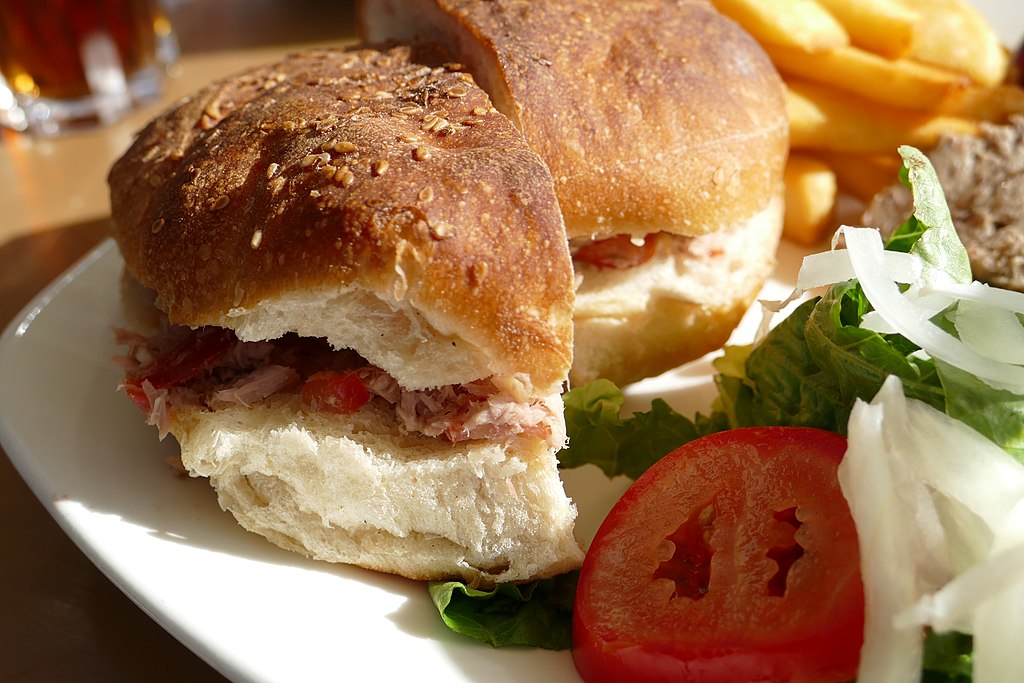 Kritzolina, CC BY-SA 4.0, Wikimedia Commons
Kritzolina, CC BY-SA 4.0, Wikimedia Commons
French Gastronomy, France
When UNESCO chose to include French gastronomy, they weren’t thinking about the fussy gourmet dishes prepared by professional chefs throughout the country. They were thinking about home cooking prepared by and shared among families, integrating local, home-grown ingredients, and made using traditions passed down from generation to generation.
The entire ritual of the dinner—from the aperitif to the starter to the main to the salad (after the main, of course) to the cheese…and dessert, of course—is integral to what UNESCO considers the gastronomic meal of the French.
Nsima, Malawi
Though nsima, in different forms and with different names, is consumed throughout Africa, it’s an integral part of food culture in Malawi. To make nsima, white cornmeal is mixed with water, and the paste is stirred against the side of a pot during cooking to thicken it into a porridge. In Malawi, it’s a staple served with meat and a vegetable, and children are taught to help prepare it from a young age.
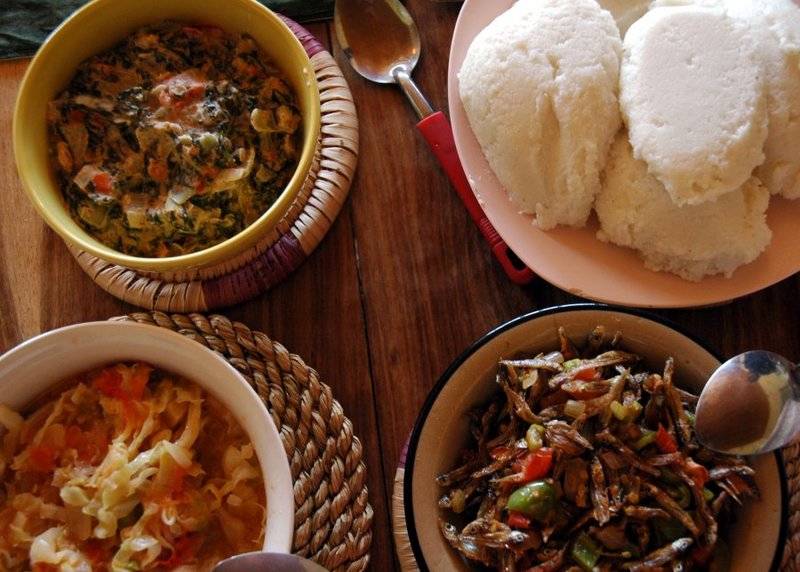 Jpatokal, CC BY-SA 2.5, Wikimedia Commons
Jpatokal, CC BY-SA 2.5, Wikimedia Commons
Truffle Hunting, Italy
Like the culture that surrounds tea in China, UNESCO chose to celebrate not just the consumption of truffles—AKA tartufo—but the traditions of hunting and harvesting the truffles. The people who collect the truffles must have a deep knowledge and connection to the land and climate. Truffle season usually falls in late autumn, and there are guided tours in Florence and around Tuscany for those interested in learning about the tradition.
Qvevri Winemaking, Georgia
People in North America tend to think of France or Italy when they think of winemaking, but that ignores the rich history of viticulture in the Caucasus, which encompasses Armenia, Azerbaijan, and Georgia. In particular, George has a unique method of winemaking, where the grapes are fermented in a qvevri, a large clay amphora which is stored underground to maintain a consistent temperature.
The difference in flavor between one of these wines and something produced on a mass scale in metal vats is astronomical.
 tomasz przechlewski, CC BY 2.0, Wikimedia Commons
tomasz przechlewski, CC BY 2.0, Wikimedia Commons
Ceebu Jën, Senegal
This dish, which features fish, rice, tomatoes, onions, and other vegetables, is the national dish in Senegal. Ceebu jën originated in fishing villages but is now eaten across Senegal. It’s served in one large bowl, and people use their hands (always the right hand) or a piece of bread to scoop out the rice and fish.
Gingerbread Craft, Croatia
Many cultures have their own version or tradition of gingerbread—but few are as eye-catching as the decorating styles in Croatian culture, which can be passed down from generation to generation. The most popular shape is the heart, known as the licitar, and the cookies are given as gifts around the holidays.
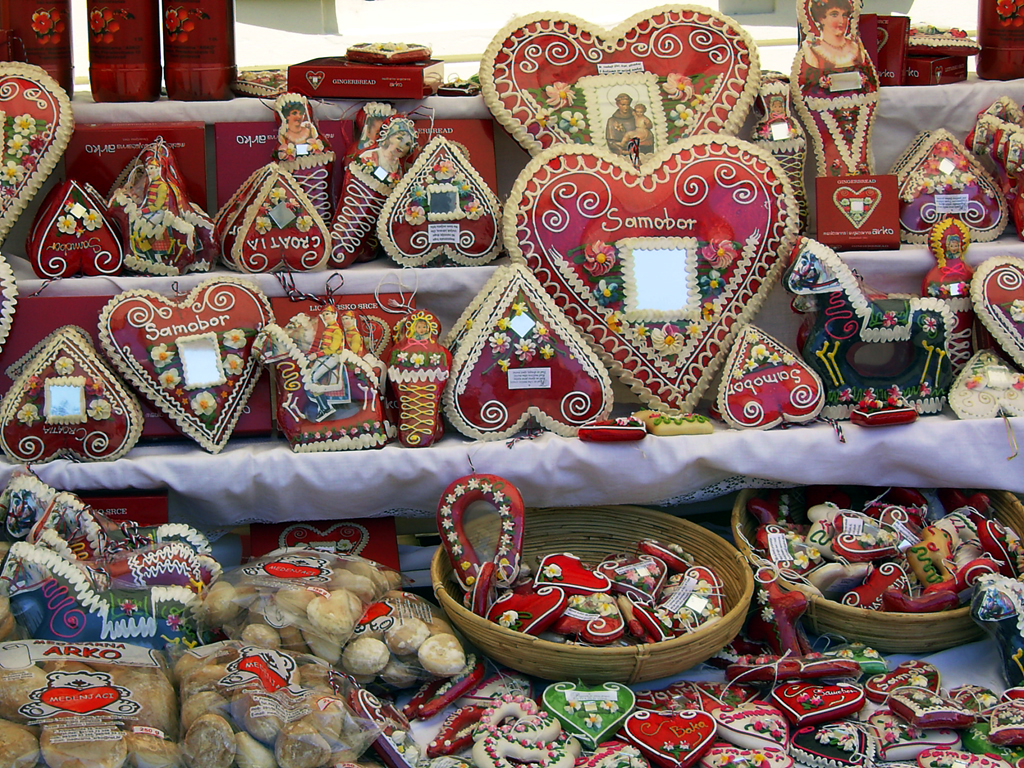 Robert Majetic, CC BY-SA 2.0, Wikimedia Commons
Robert Majetic, CC BY-SA 2.0, Wikimedia Commons
Terere, Paraguay
Most of us have heard of South American yerba mate, but few are familiar with the Paraguayan drink terere, made from a special blend of medicinal herbs and brewed with water. Each family has its own specific blend of herbs that they prepare, and though it may not look super appetizing, it’s said to be refreshing and tasty.
 Overkill53, CC BY-SA 4.0, Wikimedia Commons
Overkill53, CC BY-SA 4.0, Wikimedia Commons
Hawker Food Culture, Singapore
The hawker markets found in Singapore are a showcase of the country’s diversity of culture, where chefs carefully prepare a handful of specialty dishes for diners, often integrating flavors from Malaysian, Indian, and Chinese cuisine. They’re also a social center for those who visit them, and offer affordable, fresh meals. UNESCO emphasized the important role they play in bringing people together, and no trip to Singapore is complete without a visit to a hawker market.
Turkish Coffee, Turkey
While some of the food traditions on this list may be new to readers, many know Turkish coffee already. Coffee became an important part of life and a trading tool during the Ottoman Empire, and coffee consumption and traditions around its preparation spread throughout the region as a result. The preparation of Turkish coffee involves the holloware that is part of the ritual, like the Turkish coffee pot, AKA the cezve.
The process is also known for the intricately designed serving sets that are used to prepare and serve the coffee, often made in silver or bronze.
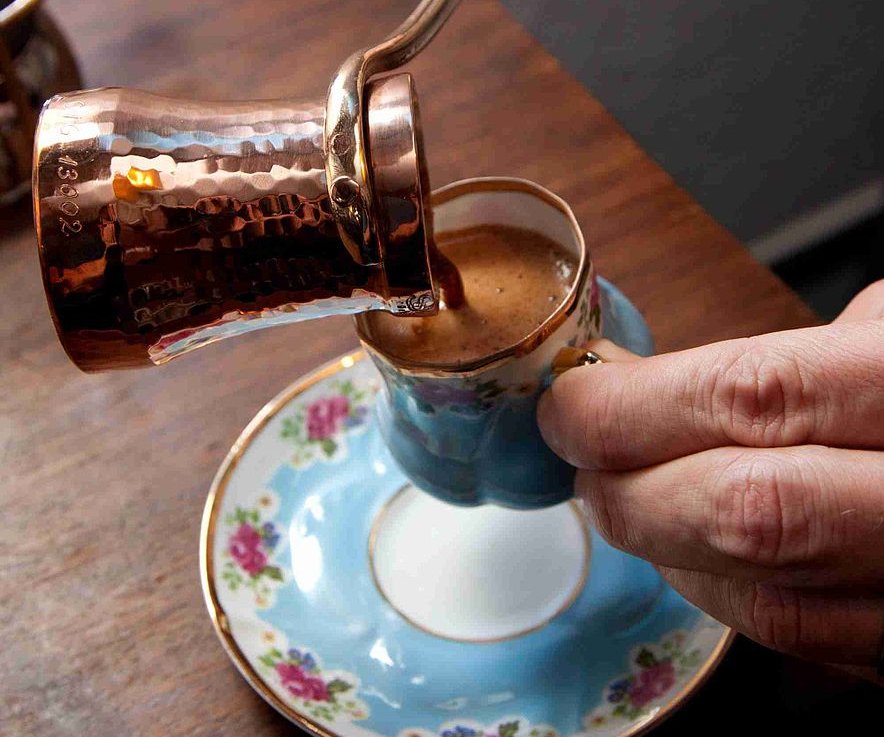 Eaeeae, CC BY-SA 3.0, Wikimedia Commons
Eaeeae, CC BY-SA 3.0, Wikimedia Commons
Dolma, Azerbaijan
While you might find dolma in your local Greek or generic Middle Eastern restaurant, the tradition of making and eating Dolma is recognized by UNESCO as an intangible part of culture in Azerbaijan. The dish consists of a cooked grape leaf stuffed with a filling made with a mix of meat, rice, and onion.
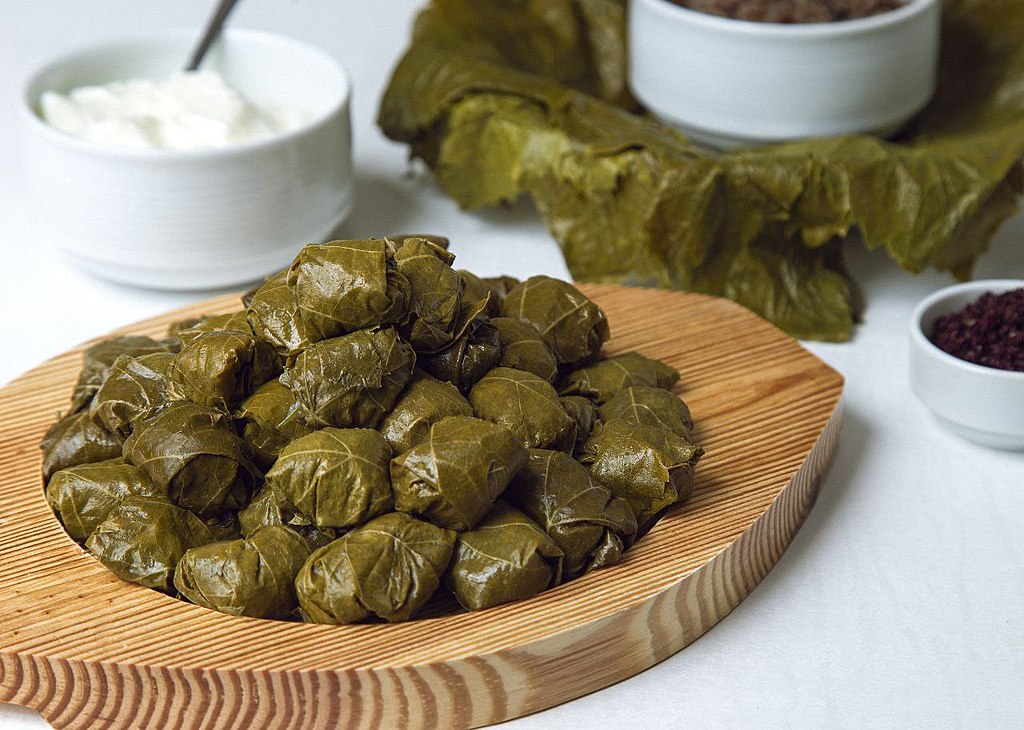 Sefer azeri, CC BY-SA 4.0, Wikimedia Commons
Sefer azeri, CC BY-SA 4.0, Wikimedia Commons
Flatbread, Azerbaijan, Iran, Turkey, And Central Asia
Many cultures have their own version of flatbread, and it’s a staple food in the above-mentioned countries. To make flatbread, a simple dough of flour, water, and salt is mixed, and then cooked in a clay oven, a cauldron, or on a metal plate. It’s such an important part of day-to-day life in those regions that UNESCO added it to its list in 2015.
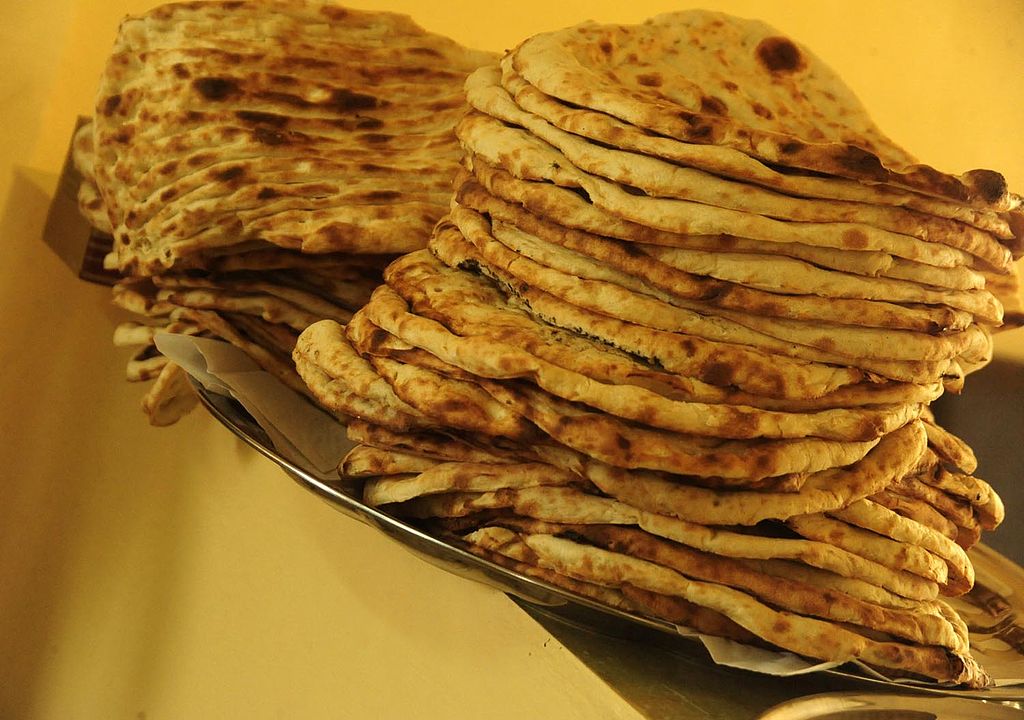 Christine A. Darius, CC BY 2.0, Wikimedia Commons
Christine A. Darius, CC BY 2.0, Wikimedia Commons
Ceremonial Keşkek, Turkey
This traditional stew is prepared with wheat or barley and meat or chicken and is served at special occasions and holidays in Turkey, Greece, and Iran. The preparation of keşkek is as ceremonial as the occasions on which it’s served: the grains are prayed over and music is played as they’re prepared for cooking. During the process, wooden hammers beat the grains into a fine consistency. As you can imagine, it takes a community to properly fulfill all of those steps, which is why it was chosen as a representative of Turkish culinary tradition.
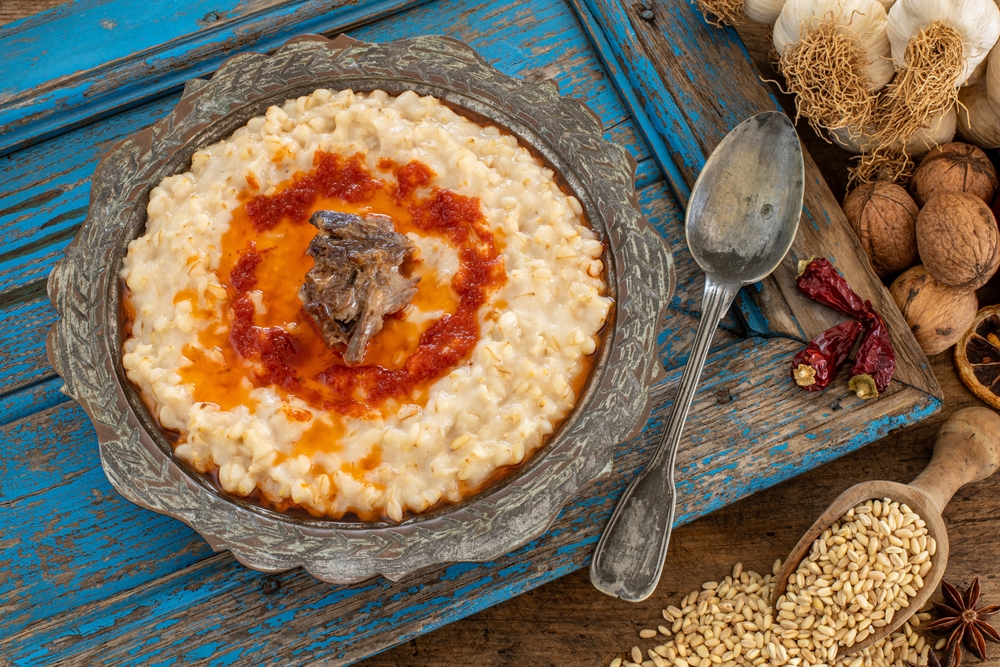 Gulcin Ragiboglu, Shutterstock
Gulcin Ragiboglu, Shutterstock
Plov/Palov, Uzbekistan
There are as many versions of plov as there are cooks, as everyone has their own combination of spices, vegetables, and meat that they add to the rice-based dish. Prepared in massive pans, the traditional dish can be eaten at every meal.
Oshi Palov, Tajikistan
Like palov, Tajikistan’s oshi palov is a rice dish that’s an important part of local culture—but it’s also so much more. It’s referred to as a “dish of peace” for the way it brings people together, and is prepared for holidays and special social gatherings like weddings. It’s eaten communally from the same pot by people using their hands, and singing can be part of the mealtime.
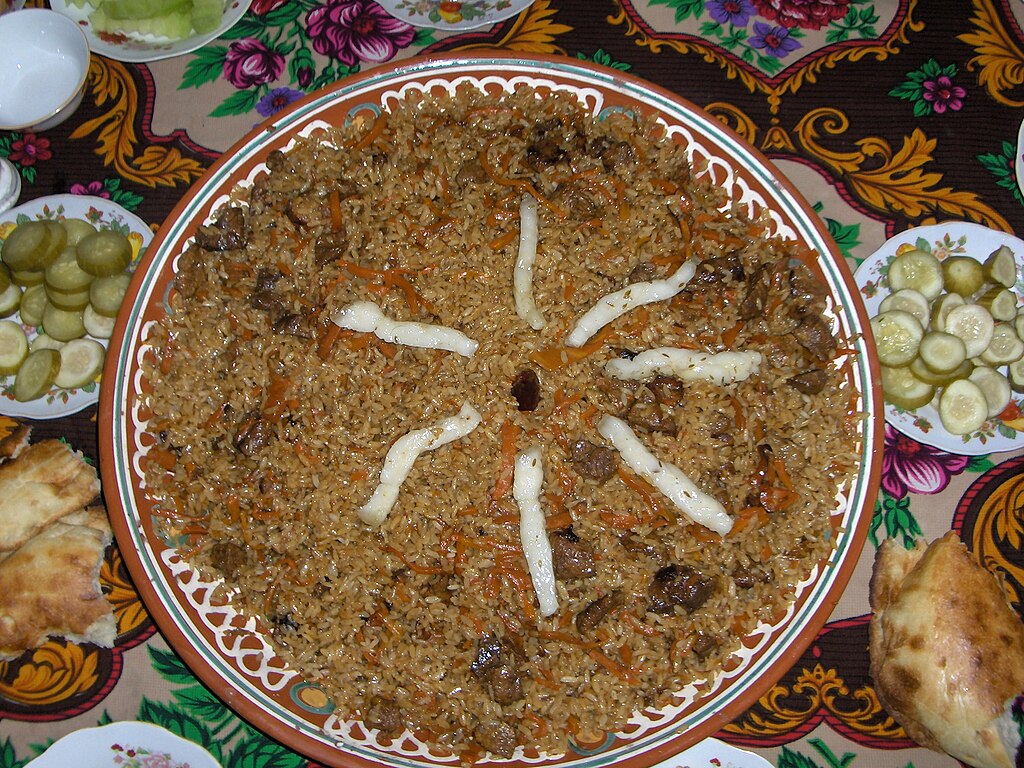 I, Ibrahimjon, CC BY-SA 3.0, Wikimedia Commons
I, Ibrahimjon, CC BY-SA 3.0, Wikimedia Commons
Airag, Mongolia
Fermented dairy is an important part of many diets throughout the world, and in Mongolia, it’s most often consumed as airag, which is prepared by churning horse milk in a special bag. It has a long history in the region, and the preparation of airag is an important social tradition, which is part of the reason why it was added to the UNESCO list. It’s hard work, too—with the milk being churned more than 500 times to get it started.
What Else Is On The Intangible Cultural Heritage List?
Though we’ve included the 30 food and drink traditions that made it to UNESCO’s Intangible Cultural Heritage List, there’s a lot more to the list than just that. It also includes cultural practices, traditions, festivals, performances, crafts, and forms of storytelling.
Notable Omissions
While it’s easy to understand why these cultural traditions, passed down through centuries and centuries, have made the list, there are also some notable omissions on the list—some new, some old, and some very unexpected. Here are a few we noticed.
French Winemaking
Though the inclusion of traditional Georgian winemaking is understandable, France has one of the most distinctive and recognized wine cultures, including their notions of terroir and their tightly-controlled AOC system. Its history goes all the way back to the 6th century! And it’s not the only exclusion, either.
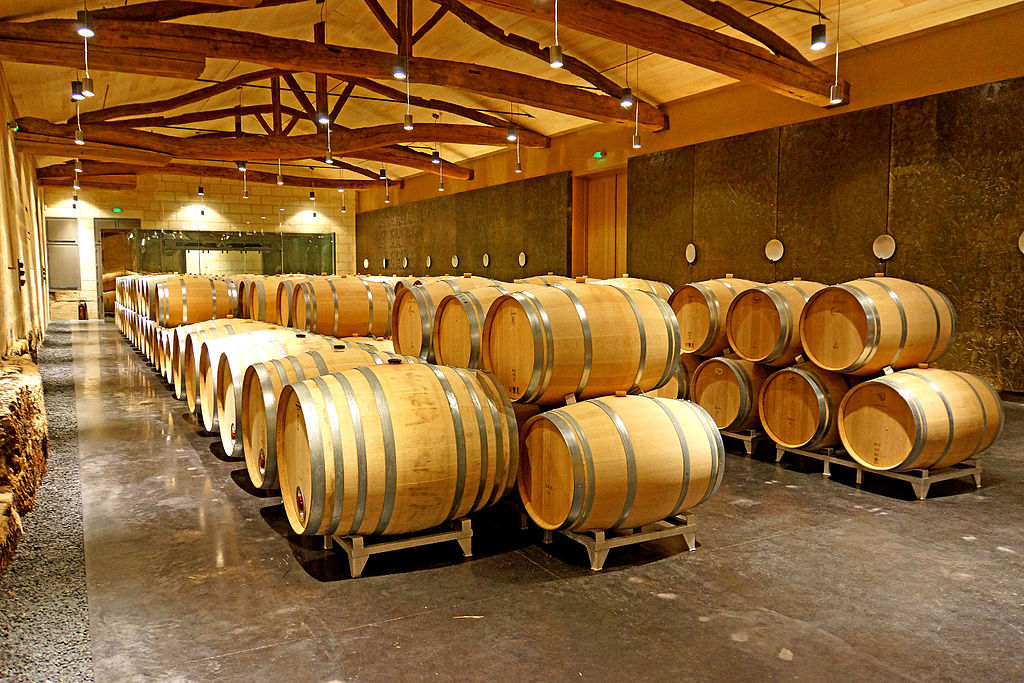 Dennis G. Jarvis, CC BY-SA 2.0, Wikimedia Commons
Dennis G. Jarvis, CC BY-SA 2.0, Wikimedia Commons
Cheesemaking
Though the tradition of cheesemaking in France would be an obvious choice, there’s also the production of Italian Parmigiano-Reggiano, or English cheddar, or Swiss gruyere.
Chocolate Making
Yes, things are sounding very indulgent on this list of notable omissions to the UNESCO list—but the exclusion of most sweets or desserts is surprising, especially considering that the history of chocolate goes back over 5,000 years in South America.
Any American Food
Are we being Western-centric? Perhaps. But the culinary traditions that have developed throughout North America speak to its rich history—particularly in the South, where distinctive food traditions and culture sprung up and thrived in spite of centuries of slavery.
Indian Food
In a country as populous as India, with a tradition so rich and deep, and one of the most beloved cuisines in the world, it’s surprising that UNESCO didn’t see it fit to include any of the traditional dishes that make up Indian gastronomy.
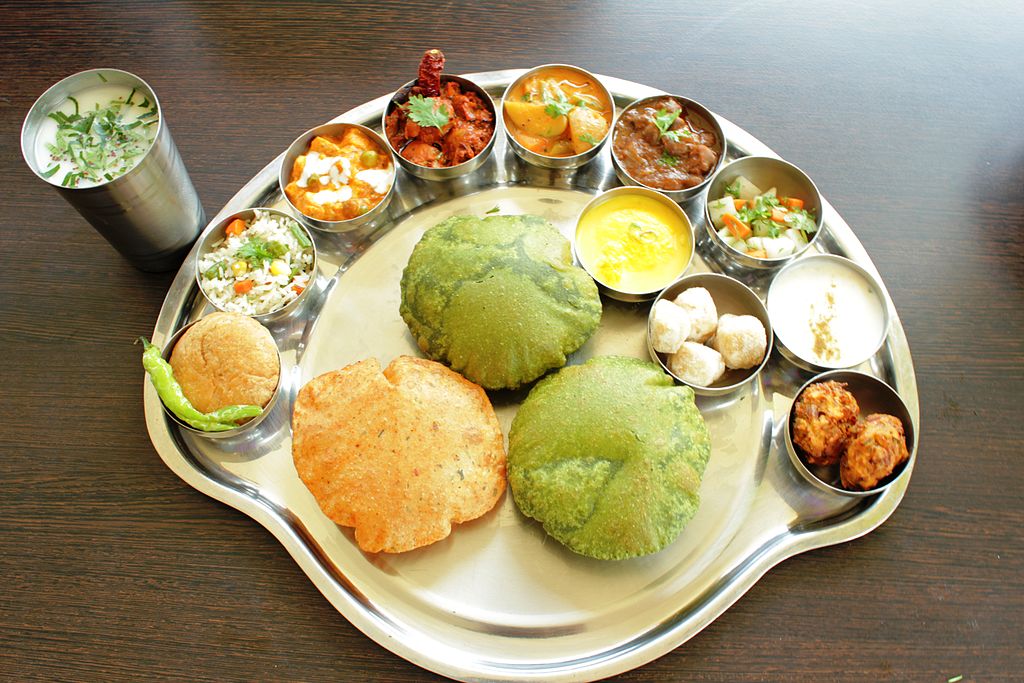 Vivek3dartist, CC BY-SA 4.0, Wikimedia Commons
Vivek3dartist, CC BY-SA 4.0, Wikimedia Commons
Hakarl, Iceland
Traditional Icelandic food has an intimidating rep, to say the least, thanks to travel and food writers, as well as Anthony Bourdain, who visited for an episode of No Reservations. Iceland, isolated as it is, has an understandably quite unique gastronomic tradition. One of their most distinctive dishes is Hakarl, which is fermented shark.
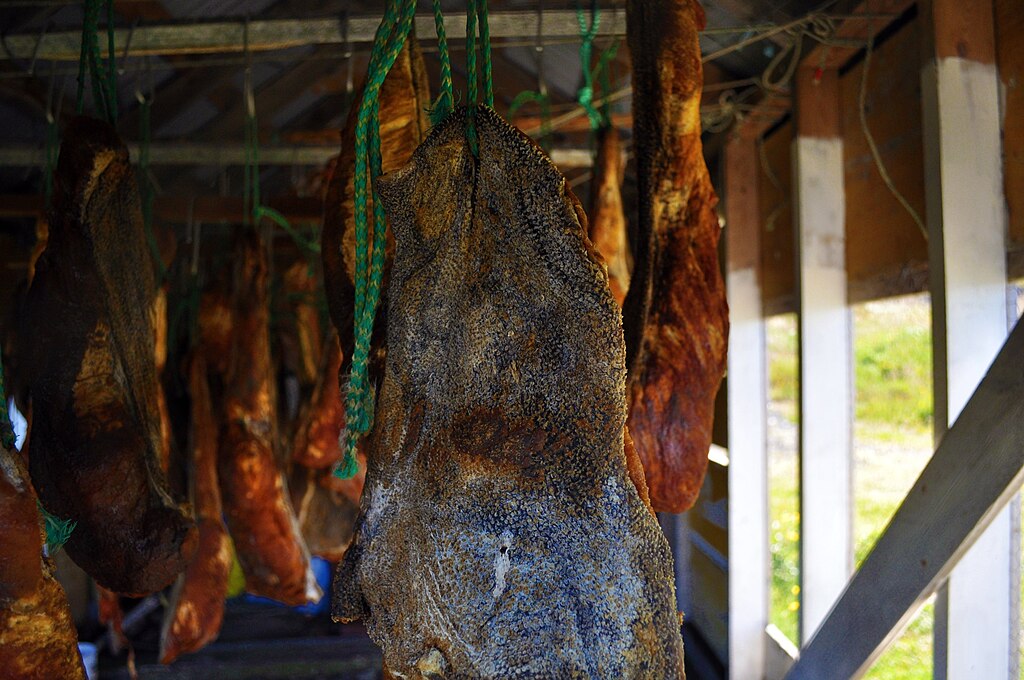 Funky Tee, CC BY-SA 2.0, Wikimedia Commons
Funky Tee, CC BY-SA 2.0, Wikimedia Commons
Japanese Tea Ceremonies, Japan
While Chinese tea culture was included, one notable omission was the Japanese tea ceremony, which has a long history and is full of incredibly intricate rituals that essentially make it an art form. It’s a total production involving not just the tea, but the setting, the decorations (hanging scrolls and floral arrangements), the accompanying meal, and the clothing that’s worn as part of it!
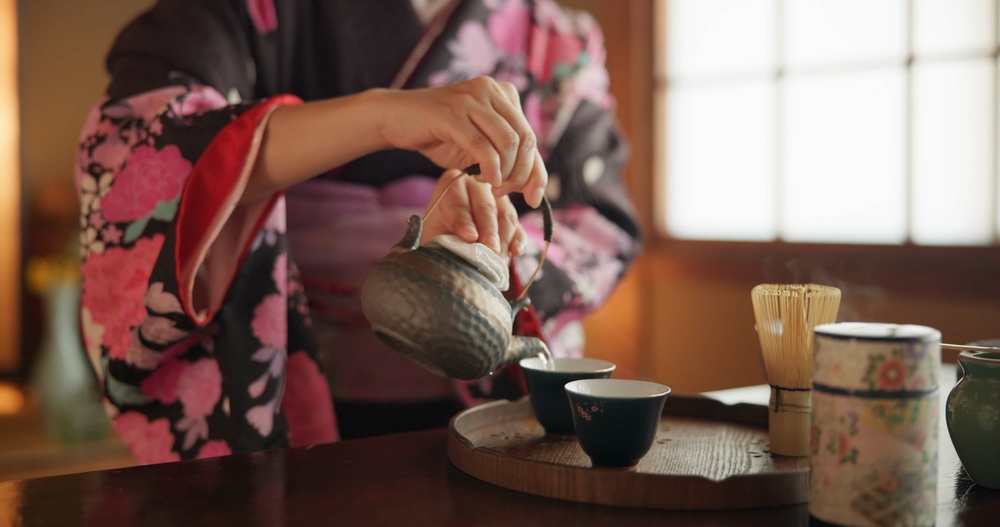 PeopleImages.com - Yuri A, Shutterstock
PeopleImages.com - Yuri A, Shutterstock

